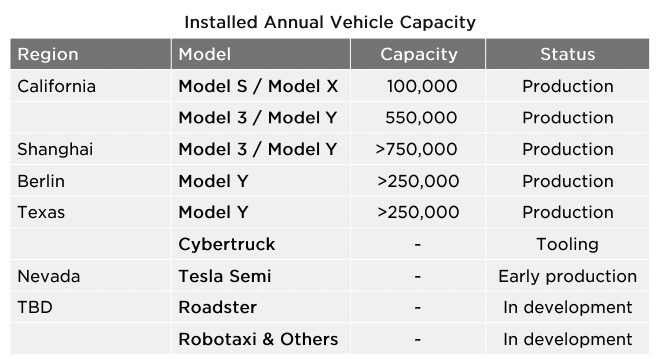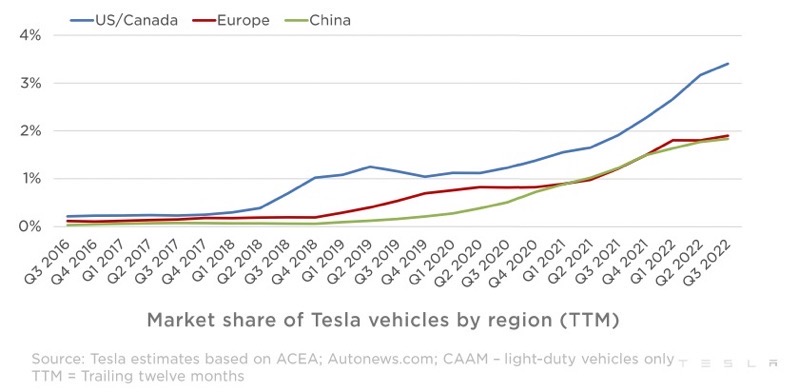
Tesla Q3 2022: Cybertruck in ‘Tooling’ Stage, Semi in ‘Early Production’

Tesla announced its Q3 2022 earnings today, posting a staggering $21.4 billion in revenue, up 56% year-over-year and setting new production and delivery records.
The company’s Installed Annual Vehicle Capacity remains at over 1.9 million vehicles across its factories in California, Shanghai, Berin and Texas. But more interestingly, the status of the Cybertruck in the company’s charge says the latter has now moved to the ‘tooling’ stage, meaning the company is setting up machines to build the truck.

As for the Tesla Semi, it has now reached the ‘early production’ stage, with the first deliveries expected in December as previously noted by CEO Elon Musk. “The initial phase of Tesla Semi deliveries is scheduled to begin in December 2022,” reiterates the Q3 investor slide deck.
That’s a change from Q2, when both the status of Cybertruck and Semi were “in development” on Tesla’s Installed Annual Vehicle Capacity chart.
“We are making progress on the industrialization of Cybertruck, which is currently planned for Texas production subsequent to Model Y ramp,” says Tesla.
As for factories in the U.S., which are located in California, Texas and Nevada, Tesla says it continues to “implement solutions to further increase the production rate in Fremont. The production rate of Model Ys in Texas continued to increase in each month of the quarter. The total number of 4680 cells produced—those sent to formation—increased 3x sequentially in Q3,” said Tesla.
As for Giga Shanghai, Tesla says the Q3 production rate “surpassed previous quarterly records,” adding that the location “remains our main export hub supplying vehicles to most markets outside of North America.”
In Europe, Berlin-Brandenburg has now produced more than 2,000 Model Y vehicles in a single week using 2170 battery cells and the production rate progress “is aligned with our expectations.”
“We plan to grow our manufacturing capacity as quickly as possible,” says Tesla. “Over a multi-year horizon, we expect to achieve 50% average annual growth in vehicle deliveries. The rate of growth will depend on our equipment capacity, factory uptime, operational efficiency and the capacity and stability of the supply chain,” said Tesla.
Below is a chart of Tesla’s market share of cars by region, led by the U.S. and Canada:


